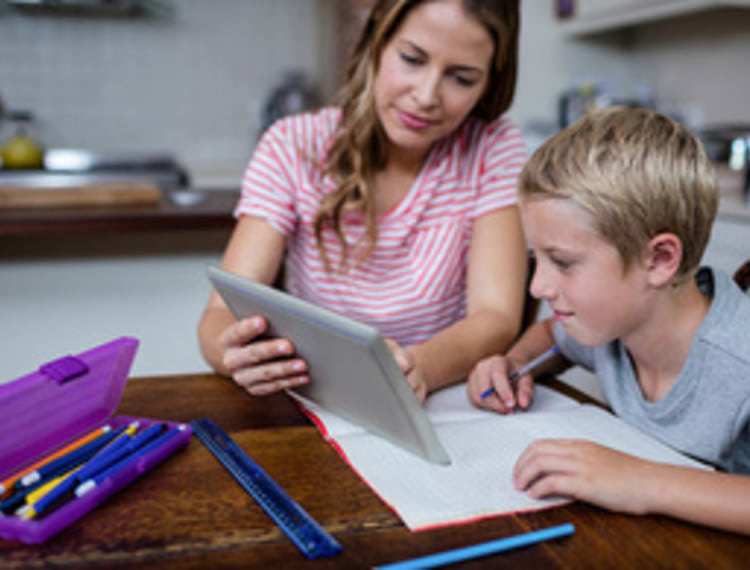Digital divide narrowed by the pandemic, but too many students are still unable to learn online

The UK’s #DigitalDivide narrowed during the coronavirus pandemic, @Ofcom research suggests
The proportion of homes without internet access appears to have fallen from 11% in March 2020, when the UK entered lockdown, to 6% of homes in March this year.
Adults with previously limited digital skills have embraced online shopping, digital banking and video calling friends and family – while younger people acted as IT support, helping older or less digitally-confident friends and relatives get connected.
Minority remain digitally excluded
Despite many more people taking a leap of faith into the online world, for the 6% of households who remain offline, our research finds that digital exclusion during lockdown is likely to be more disempowering than ever.
Groups least likely to have home internet access are those aged 65+, lower income households, and the most financially vulnerable. Almost half of adults who remain offline say they find the internet too complicated, or it holds no interest for them. Meanwhile, for more than a third of people a lack of equipment is a barrier.
However, six in ten of those who don’t use the internet at home say they have asked someone to do something for them online in the past year. Among these ‘proxy users’, the most common need was help in buying something.
Yih-Choung Teh, Ofcom’s Strategy and Research Group Director, said:
“For many people, lockdown will leave a lasting legacy of improved online access and better digital understanding. But for a significant minority of adults and children, it’s only served to intensify the digital divide.
“We’ll continue to work with Government and other partner organisations to promote digital literacy and ensure that people of all ages and backgrounds are empowered to share in the benefits of the internet.”
One in five children did not have consistent access to a suitable device for their online home learning
While our research on parents and children found nearly all children of school age had online access in the home, 4% relied solely on mobile internet access during the pandemic – with 2% only able to get online using a smartphone. School-aged children from the most financially vulnerable homes (5%) were more likely than those in the least financially vulnerable households (2%) to have mobile-only access.
Additionally, around one in five children did not have consistent access to a suitable device for their online home learning. This increased to a quarter of children from households classed as most financially vulnerable.
Most children with intermittent access had to share a device to manage home-schooling. For 3% of schoolchildren, the lack of access to a device prevented them from doing any schoolwork at all.
Online escapism during pandemic…
Online activities provided a welcome distraction for many of us during lockdown, with the pandemic accelerating our adoption of digital services.
Additional data suggests that the time children spent watching non-broadcast content (such as streamed content or online video) on their TV each week greatly increased last year – from 7 hours 49 minutes in 2019, to 11 hours 19 minutes– overtaking traditional broadcast viewing for the very first time (6 hours 54 minutes).
Gaming also grew in popularity among adults. More than half of adults played games on a device such as a smartphone, games console or PC, with a third of adults playing online, with or against other people.
Seven in ten 5- to 15-year-olds played games online in 2020, with boys in particular using this as a way to connect with their friends. A quarter of pre-schoolers aged 3-4 were also online gaming in 2020 – with their parents claiming that nearly half of them now own their own tablet and nearly one in 20 their own smartphone.
…but screen time is harder to control
With children staying home from school and leisure or sporting activities cancelled, many parents admitted finding it more difficult to control their children’s screen time during the past year. This was the case for 40% of parents of 5-15 year-olds, and 30% of parents of pre-schoolers. Up to half of parents also said they had to relax their approach to their children’s online use as a result of lockdown restrictions.
But parents also recognised the value of the internet during lockdown. More than six in 10 thought it helped their child to learn a new skill, while about half credited the internet with helping their child to build or maintain friendships – an increase since 2019.
Children with mental or physical conditions appear more at risk online
Just over half of 12-15s had a negative online experience of some sort last year, higher than in 2019 (41%) – and possibly as a result of children spending more time online.
New analysis this year showed that children with a physical or mental condition that impacts or limits their daily lives were more likely to have had a negative interaction online. For example, they were more likely to be contacted online by a stranger who wanted to be their friends (45% vs. 27% of those without a condition), and to feel pressured to send photos or other personal information to someone (14% vs. 4% of children without a condition).
Too many students are still unable to learn online
One in five children (17%) did not have consistent access to a suitable device for their online home-learning. This increased to 27% of children from households classed as most financially vulnerable. While nearly all children had online access in the home, 4% relied solely on mobile internet access during the pandemic.
Oak National Academy, the nation’s online classroom, has welcomed new research from Ofcom which shows too many pupils are still unable to learn online, despite an overall rise in the number of households using the internet since the pandemic struck.
Oak successfully campaigned to have its online classroom zero-rated for this academic year so users can access content without incurring data costs. However the Ofcom report shows there are still significant challenges in accessing virtual learning for many families.
Matt Hood, Principal of Oak National Academy, said:
“It is clearly good news that more homes have better access to the internet and online learning, but there are still too many children who are at risk of being locked out of learning. The fact that one in four children from the most deprived households do not have consistent access to a device goes to show how much work we still need to do to provide fair access to education for all. It is fundamentally wrong that in 2021 we have digital haves and have-nots. It’s high time everyone from policy makers to telecoms firms redouble their efforts to end the digital divide.”
Simon Carter, Director at RM:
“OFCOM’s annual snapshot report just reinforces how critical technology has become in the education of our children – if the pandemic has made one thing abundantly clear it is that technology in education should not be considered a luxury, but a necessity. It’s technology that provides a hybrid approach to teaching – where online and classroom learning are combined, ensuring pupils still receive the same high quality of teaching in the event that school sites have to close.
“In fact, at RM we recently reported that both parents (78%) and teachers (61%) believe that technology in schools is improving learning outcomes for their children. As a result, remote learning can no longer be a temporary measure; not only was it a lifeline during lockdown but it also empowers pupils and staff to learn and teach from home, supporting a range of hard and soft digital skills, such as creativity, collaboration, innovation, and research and information fluency online. Remote training is also increasingly becoming the most common way of imparting skills in this country.
“Teachers are now better prepared to adapt to changes in the education sector, and it’s crucial that they bring that preparation into the classroom; from digital assessments to keeping in touch with pupils via Google Classroom, Microsoft Teams or Zoom, and even creating new and digital-friendly teaching materials. As we continue to enter this ‘new normal’, and young people are increasingly called upon to help bridge the growing digital skills gaps in many industries, it’s important that they are equipped with the right resources and technologies to do so, ensuring that they can continue to learn and develop in spite of any future disruptions.”











Responses